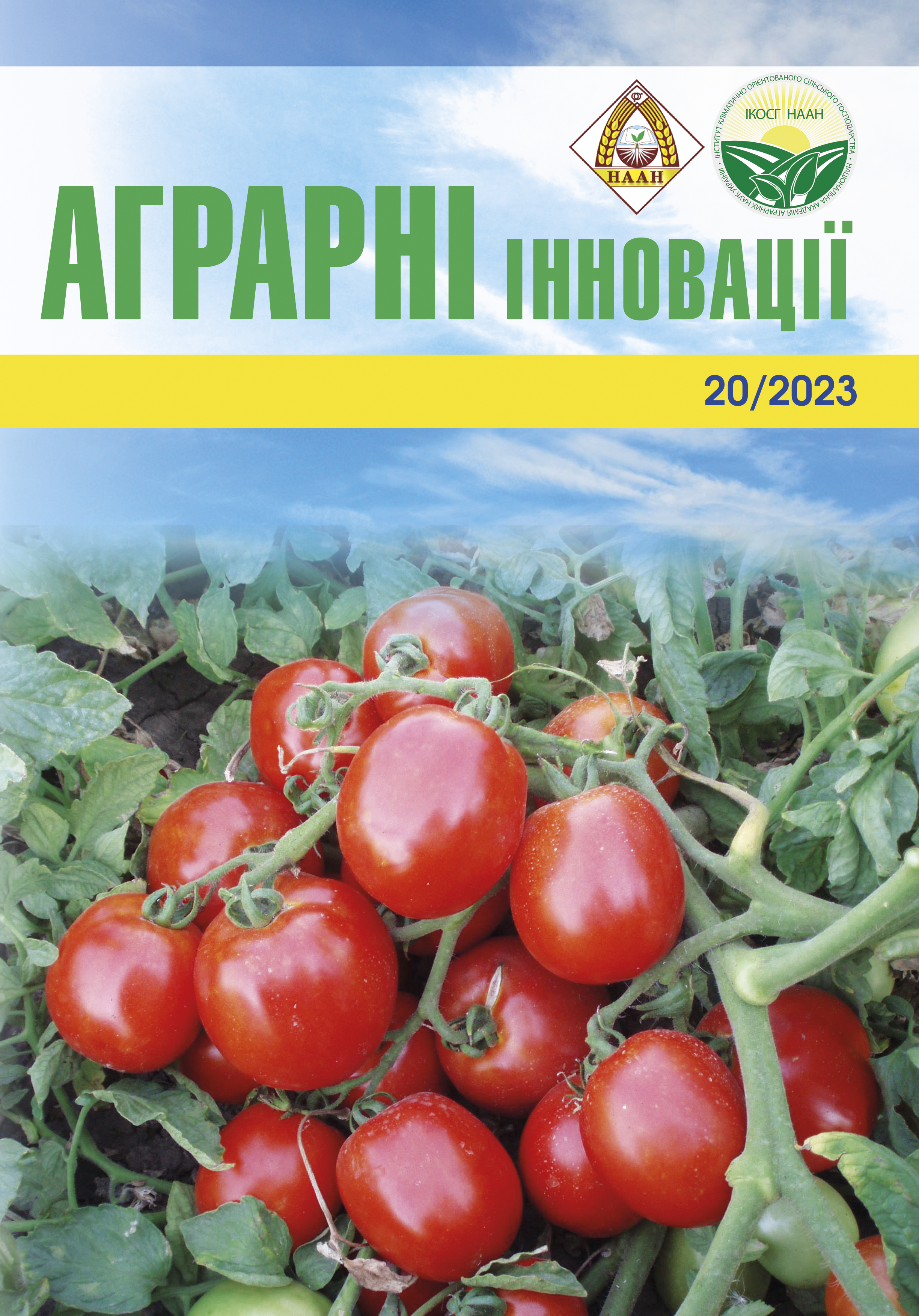Productivity of soybean depends on predecessors and fertilizer systems in short-rotation crop rotations of the Steppe zone of Ukraine
Abstract
Important elements in soybean cultivation technology include optimizing the choice of predecessor and agronomic conditions, particularly fertilization systems. However, there is still limited research on the response of modern soybean varieties to different fertilizer types in various soil-climatic zones of Ukraine, especially considering climate change. Therefore, it is important to scientifically justify the use of technological measures to increase soybean yield and seed quality in specific soil-climatic conditions and improve the quality of soybean products obtained from the harvest. Our research aimed to determine the dependence of soybean productivity on different predecessors, and fertilization in short-rotation crop rotations. Field studies were conducted from 2013 to 2022 at the Institute of Agriculture of the Steppe National Academy of Agrarian Sciences. Soybeans of the Medea variety (2013–2020) and Zlatoslava variety (2021–2022) of early maturity group were grown in short rotation grain-row crop rotations with varying soybean saturation. Cultivating soybeans after corn, buckwheat, and soybean predecessors did not have a significant impact on soybean yield, except for a tendency for lower yields after repeated soybean cultivation and slightly higher yields after the buckwheat predecessor. The use of mineral and organo-mineral fertilization systems resulted in significant yield increases for all investigated predecessors. The highest yield increases were observed after the buckwheat predecessor, with 0.36 t/ha (19.9%) for the mineral fertilization system and 0.45 t/ha (24.9%) for the organo-mineral fertilization system. The previous crop did not significantly affect productivity indicators. Higher nutrient outputs were obtained when soybeans were grown after buckwheat – 4.27 t/ha grain units, 3.38 t/ha feed units, and 0.66 t/ha digestible protein units. Significant increases in soybean productivity were achieved through the use of fertilization systems. The highest increases in grain units, feed units, and digestible protein units were observed after the buckwheat predecessor with the organo-mineral fertilization system – 0.85 t/ha (24.9%), 0.73 t/ha (24.9%), and 0.14 t/ha (24.9%) respectively. Successive soybean crops were not inferior in productivity to those grown after corn and buckwheat predecessors.
References
2. Barabolia O. V., Naidon M. Yu., Kononenko S. M., Korovnichenko S. H. (2020). The influence of mineral nutrition on soya productivity. Bulletin of Poltava State Agrarian Academy, (4), 35–44 https://doi.org/10.31210/visnyk2020.04.0
3. Бербенець О. В. Світове виробництво сої як невичерпного джерела білків рослинного походження та місце України на світовому ринку торгівлі нею Агросвіт. 2019. № 10. 41–45.
4. Đukić V. H., Miladinov Z. J., Dozet G. K., et al. (2019). Ploughing down harvest residues of preceding crops for the purpose of soybean yield improvement. Journal of Agricultural Sciences. Vol. 64, No. 3, 2019. 215–224. https://doi.org/10.2298/JAS1903215D
5. Erickson, B. (2008). Corn/soybean rotation literature summary. Dep. of Agric. Econ., Purdue Univ., West Lafayette, In. http://www.agecon.purdue.edu/ pdf/Crop_Rotation_Lit_Review.pdf
6. Господаренко Н. М., Прокопчук І. В., Леонова К. П., Бойко В. П. Урожайність і якість насіння сої за різного удобрення на черноземі опідзоленому. Збірник наукових праць Уманського національного університету садівництва. 2020. Випуск 97. Частина 1. 136–144, https://doi.org/10.31395/2415-8240-2020-97-1-136-144
7. Islam M. S., Muhyidiyn I., Islam Md. R. et. el. (2022). Soybean and Sustainable Agriculture for Food Security. Soybean and Sustainable Agriculture for Food Security. Chapter – April 2022. http://dx.doi.org/10.5772/intechopen.104129
8. Мащенко Ю. В., Соколовська І. М., Ткач А. Ф. Продуктивність сої залежно від її частки в сівозміні та системи удобрення в умовах Північного Степу. Подільський вісник: сільське господарство, техніка, економіка. Випуск 1 (38). 2023. 26–32. https://doi.org/10.37406/2706-9052-2023-1.4
9. Покотило І. А., Крижанівський В. Г., Невлад В. І. Урожайність і технологічна якість насіння сої залежно від основного обробітку ґрунту і попередників у правобережному Лісостепу України. Збірник наукових праць Уманського національного університету садівництва. 2020. Випуск 96. Частина 1. 405–415. https://doi.org/10.31395/2415-8240-2020-96-1-405-416
10. Siamabele B., Moral M. T. (2021). The significance of soybean production in the face of changing climates in Africa. Cogent Food & Agriculture. Volume 7. 2021. Issue 1. https://doi.org/10.1080/23311932.2021.1933745
11. Сінченко В. В., Танчик С. П., Літвінов Д. В. Урожайність та якість насіння сої залежно від обробітку ґрунту і попередників у правобережному Лісостепу України. Збірник наукових праць Уманського національного університету садівництва. 2019. Випуск 95. Частина 1. 217–225. https://doi.org/10.31395/2415-8240-2019-95-1-217-225
12. Soratto R. P., Guidorizzi F. V. C., Sousa W. S. et al. (2022). Effects of Previous Fall–Winter Crop on Spring–Summer Soybean Nutrition and Seed Yield under No-Till System. Agronomy. 2022, 12 (12). https://doi.org/10.3390/agronomy12122974
13. Зуза В. С., Рожков А. О., Гутянський Р. А. Урожайність сої залежно від попередника, метеорологічних умов та ефективності гербіциду. Вісник Полтавської державної аграрної академії. 2015. № 1–2. 22–24. https://www.pdau.edu.ua/sites/default/files/visnyk/2015/01/05.pdf






